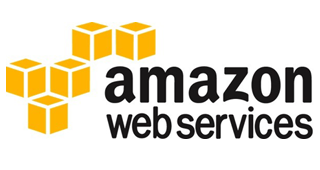We had the opportunity to attend the Infosys Analyst Summit held in Orlando with close to 100 analyst colleagues. It was a key opportunity to check-in with the vendor given we are reaching the 100 day mark of tenure for Infosys’ new CEO, Vishal Sikka.
Here are my top 3 takeaways from the analyst meeting:
Here are my top 3 takeaways from the analyst meeting:
- The new Infosys is here - Infosys has been focused on product IP before, but there can be no doubt that the product focus has been renewed and re-enforced with the appointment of SAP veteran Vishal Sikka as CEO. Sikka walked us through 5 areas what the new Infosys is doing - and they were a (new) Infosys platform (leveraging Opensource as much as possible and with deployment options on Amazon AWS and Microsoft Azure), Artificial Intelligence (AI) led Business Process Innovation (btw Sikka has a PhD in AI), Innovation Services for clients, Data and Analytics offerings (including ‘real’ analytics more here) and finally aid for and investment into startups. And Infosys is training thousands of employees in design thinking to harmonize approach to product development and speak a common language and share a common approach to the new initiatives at hand.
One colleague asked Sikka if he saw any impact on the overall Infosys numbers due to the investment activities, but he did not see any change for the current financial year. But Sikka left open that for the coming financial year (starting in April 2015) Infosys may share and track towards different financial goals given its investment plans.
- Transformation at work - Later in the day Sandeep Dadlani, Head of North America, shared the five pillars on which Infosys is transforming itself. The five pillars are “Value Ninjas” - specialists who can solve the very hard business problems enterprises face, “Accelerate Edge” - the creation of leading business platforms that create value for enterprises, “Startups” - where Infosys is helping startups to reach scale and speed, “Living Labs” - where Infosys draws together talent for rapid innovation and finally “Next Gen Innovators” - where Infosys helps and trains employee to become creative and enable them to co-innovate with their clients. Certainly 5 promising areas – we will have to check on customer success in the next quarters.
- Product showcase EdgeVerve - We sat down with the Head of EdgeVerve, Sanjay Purohit and learnt of the six areas of scope that EdgeVerve covers. The six scope areas are Digital Marketing, Commerce, Customer Service, Distribution (with TradeEdge), Ecosystem Management and Procurement. These form a remarkable investment into product, as they are built exclusively by Infosys (except for a collaboration product) and operate on the same platform. More importantly Purohit was pretty clear this is a real product offering, with the source code only available to his team. Good to see and now Infosys has to sign up more customers and upsell the offering. But a remarkable example of the creation of significant product IP by what was a traditional system integrator not long back.
MyPOV
Good to check in with a major player in the technology field right around the 100 day mark of a new CEO taking tenure. Sikka is visibly enjoying its new task and hard at work to transform Infosys into a more product centric vendor. If Infosys will hit challenges in the transformation - they will show up 300+ days into the effort - we will be checking in for that. And doing this while customers are also transforming into more digital enterprises is certainly a formidable challenge, but the short glimpse of an analyst days leaves the first impression that the management team is up to the task. In the meantime a new Infosys is forming, with a lot of potential to transform itself into a player with significant more product IP than ever before.
































